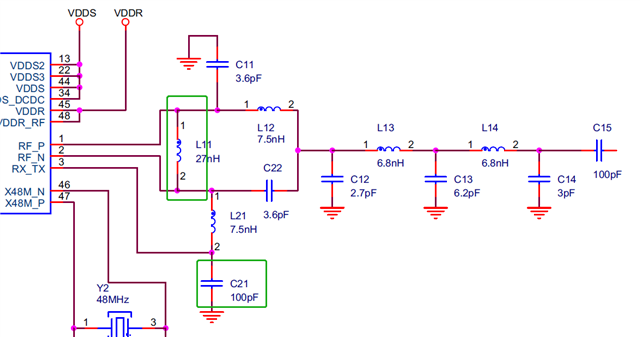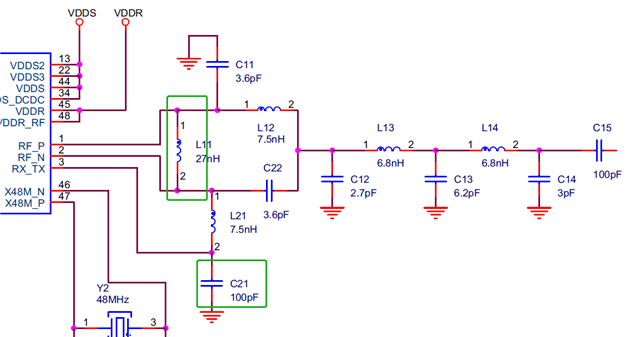Hi Team,
We are clear about the balun circuit and filter circuit of the CC1310 antenna, but the balun circuit here is a little different from the standard circuit in the textbook. There is an extra inductor L11 and an extra capacitor C21, as shown in the green box in the figure.

We find that the values of L11 and C21 are different for different frequency antennas (of course, the values of other components are also different, and we know how to pre-calculate the values of other components). But we have the following queries:
1. What are the functions of L11 and C21 here?
2. How could we determine the values of L11 and C21?
I'd appreciate it if you could explain them. Or are there any documents for us to refer to? Thank you in advance.
Kind regards,
Katherine



